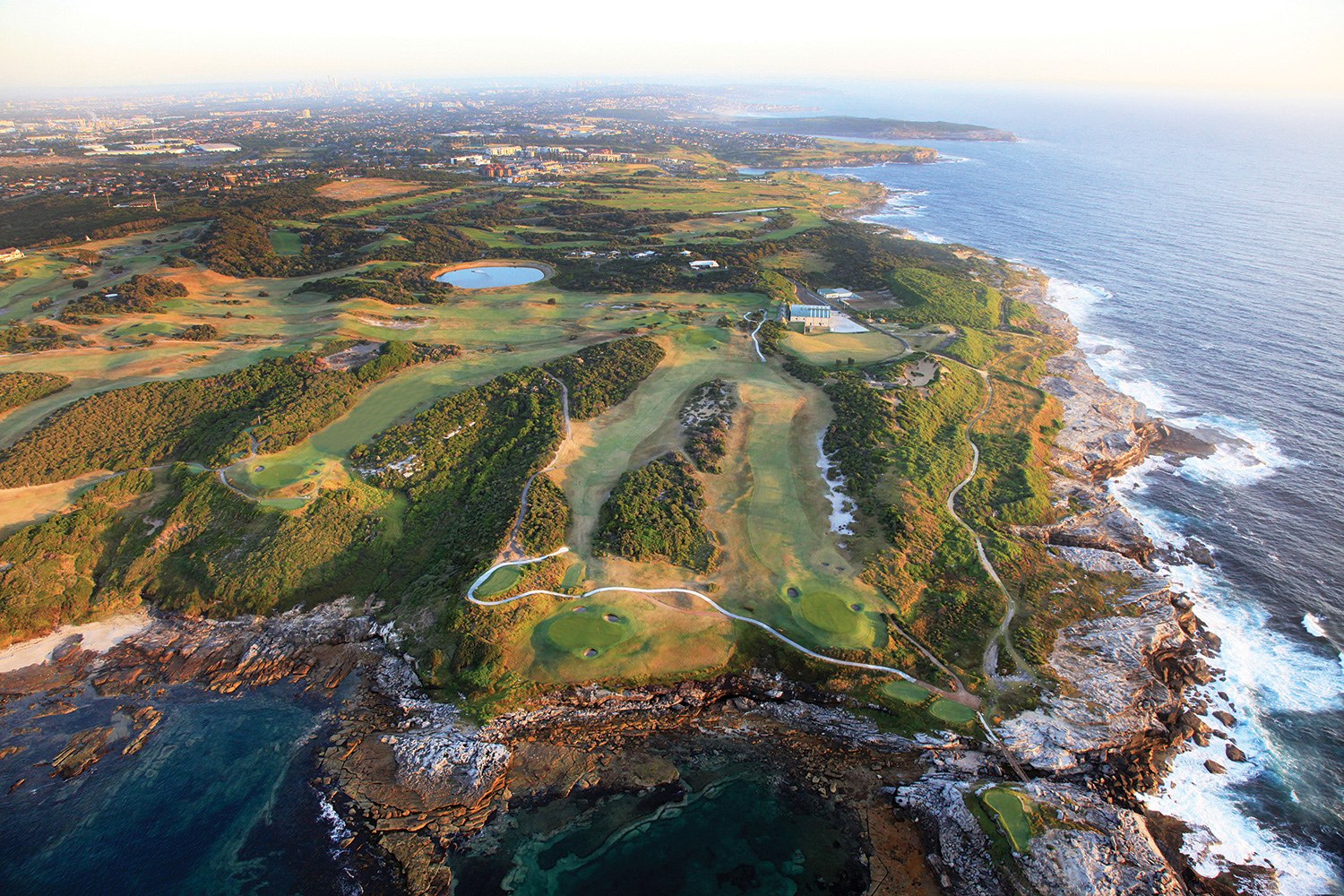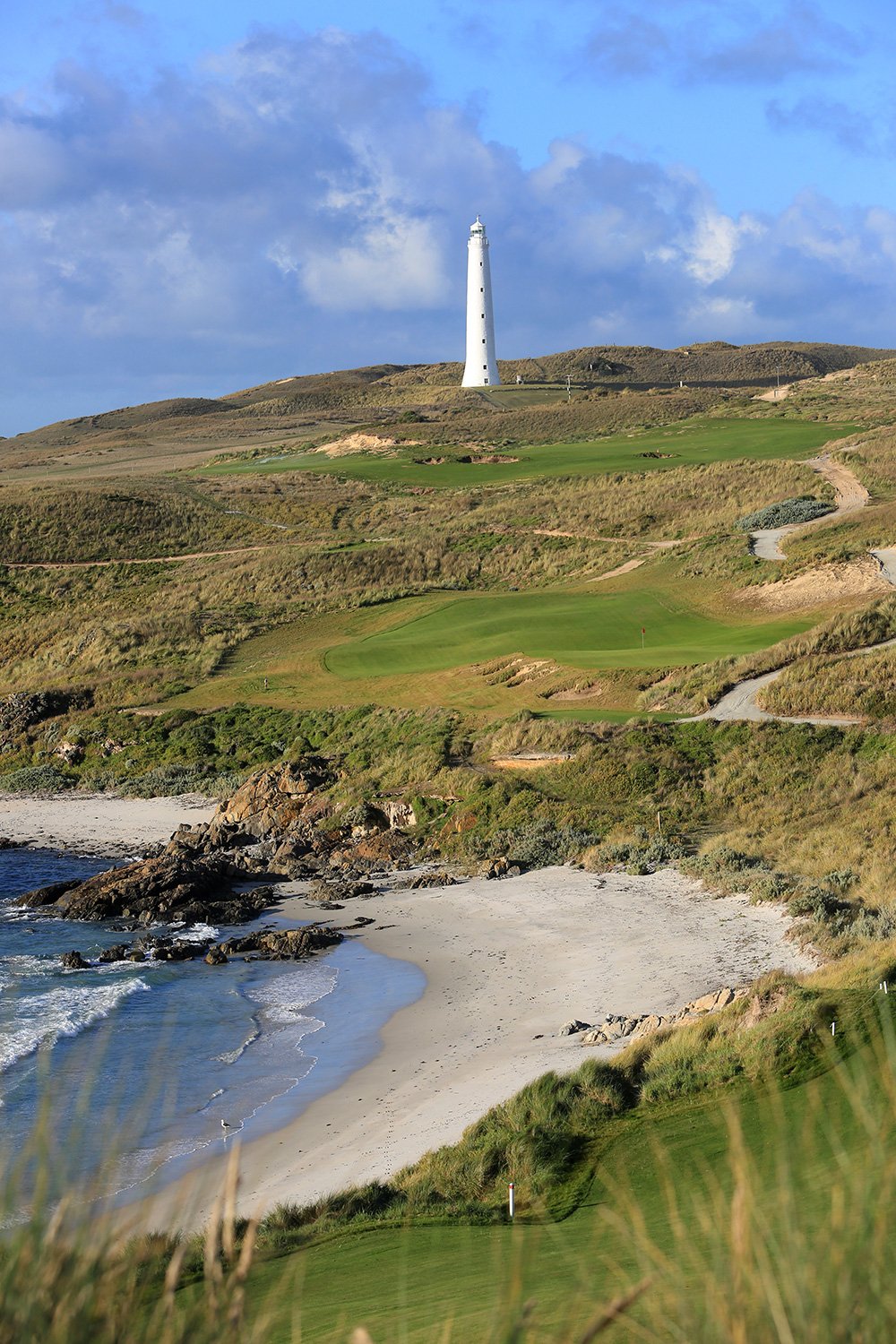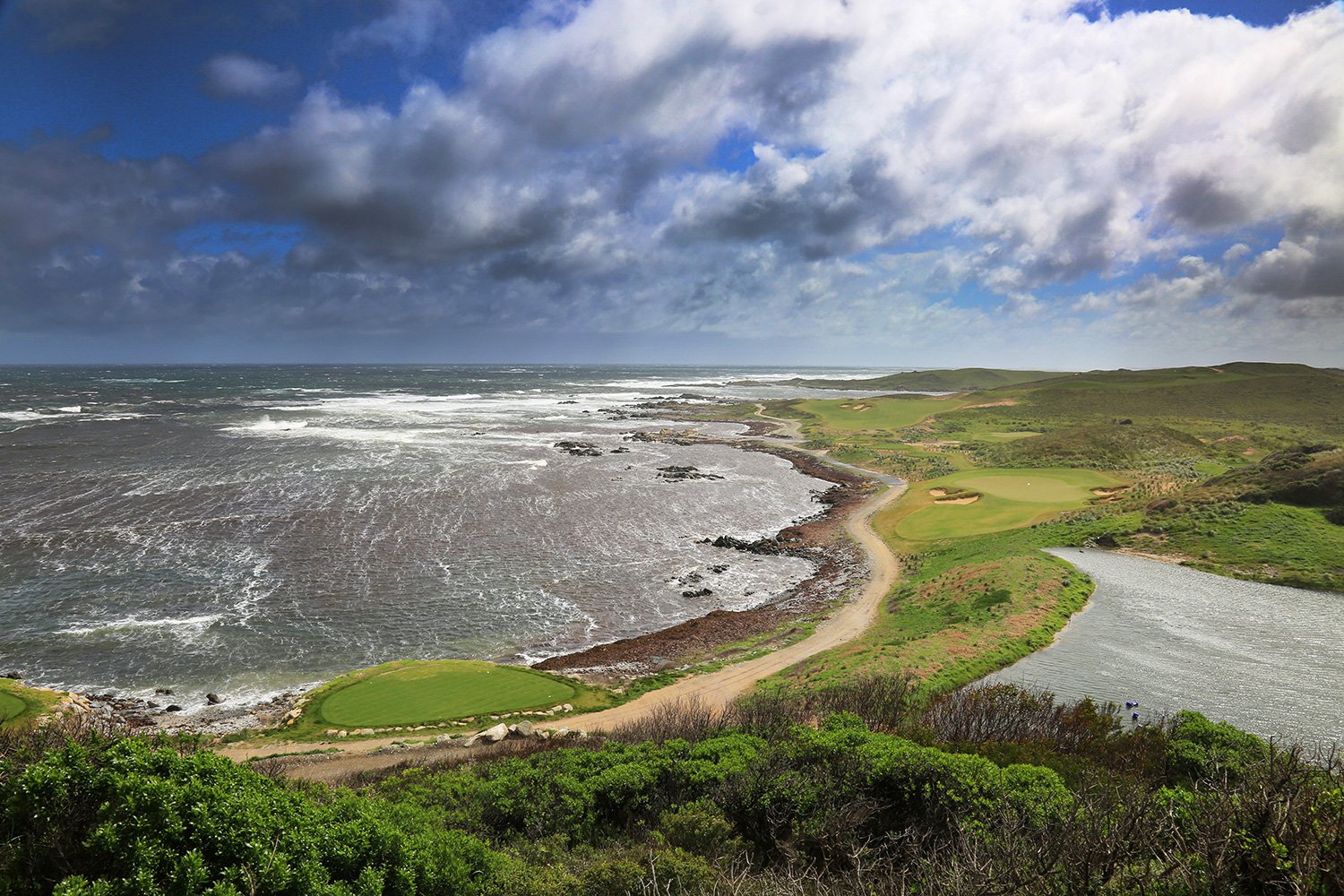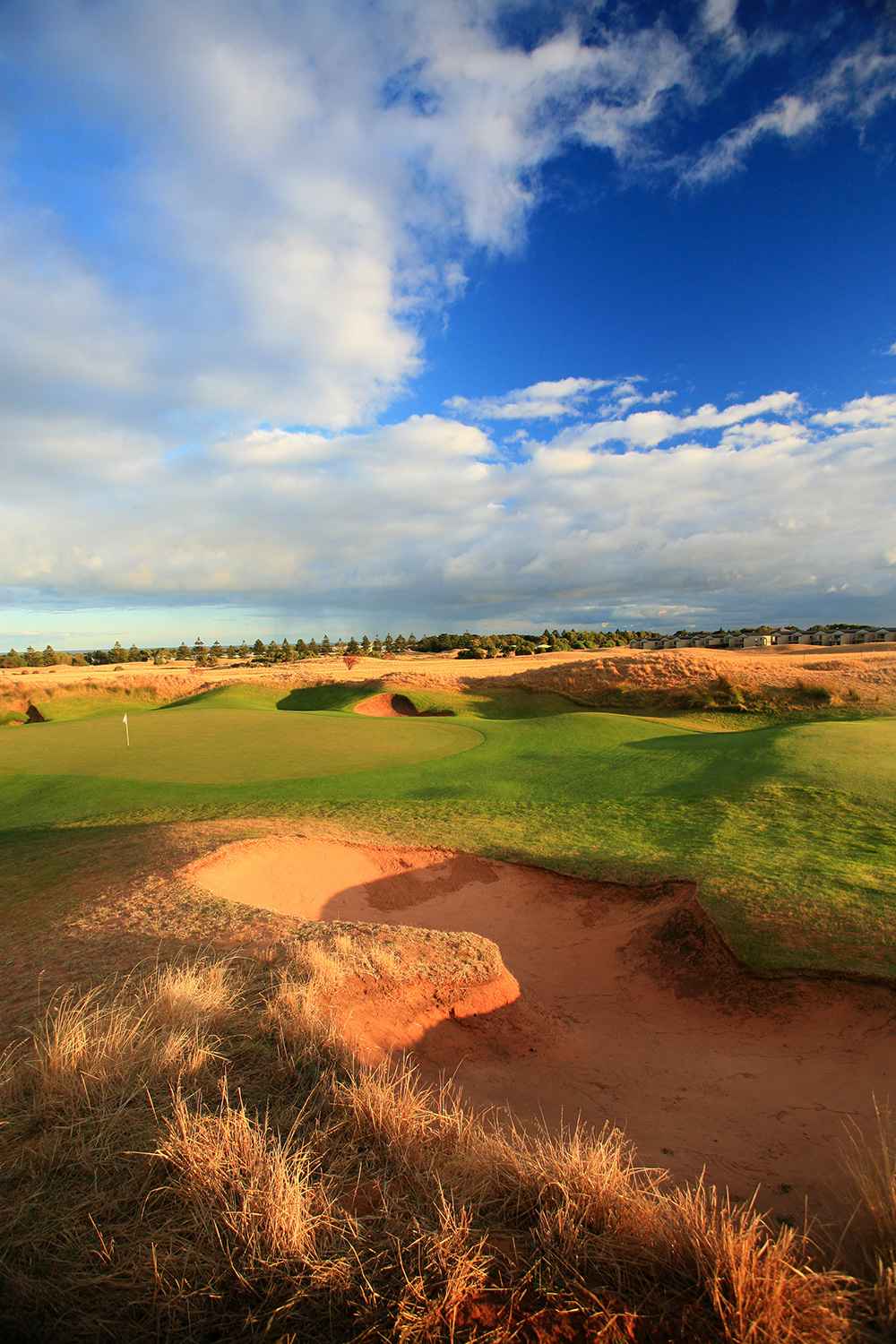It ranks among the most abused terms in the lexicon of golf. Much like ‘championship course’ (a term that can generally be watered down to just mean the place has 18 holes) and ‘well-stocked pro shop’ (aren’t they all?), too many courses are called links when in fact they are not. Pebble Beach, which next June will host its sixth US Open, is officially called Pebble Beach Golf Links. Magical setting, exceptional golf course (most of it, anyway), but a true links course? Ah, no.
Naturally this argument depends on your definition of links golf, about which there is some substantial grey area – depending on who you ask.

“I’ve heard so many different variations and arguments over what constitutes links land, I now don’t know,” says Bob Harrison, who has penned 11 courses ranked in our Top 100, either solo or in partnership with Greg Norman. “The definition that is historical was: the unusable land between the sea and the farmland. By fluke, that was usually great land for golf.”
“As always, the old links provide us with most of the answers,” adds Darius Oliver, who co-designed the stunning Cape Wickham layout on Tasmania’s King Island. “The classic links description would include a course being near the sea, on sandy ground and with firm, fast-running turf grasses like fescues and bents.”
“It’s either a links course or it’s not,” Mike Clayton, co-designer of Tasmania’s Barnbougle Dunes, says more bluntly. “A links course is on the land that links the beach to the farmland.”

So, strictly speaking, the genuine links layouts in Australia are short in number, narrowing the candidates considerably in what is an inaccurate reflection of the broader golf landscape here. Which is why more recent labels have seen the rise of the term ‘links-style’ course, simultaneously a nod to the true links and the types of shots links golf asks you to play and an acknowledgement that perhaps the land is technically not regarded as links. If we allow our definition of links golf to expand in this manner, it adds a whole raft of links experiences. And that might just be the operative word: experience. Just because you’re not walking a course that is sitting on land reclaimed from the sea, doesn’t mean you won’t face a series of shots to match that type of terrain.
“In terms of which Aussie courses share the elements of great links golf, there are several in Tasmania obviously near the sea and built on sandy ground and others that have all but the fast-running turf grasses,” Oliver says. “The old course on King Island is only firm fescue fairways and greens away from being an authentic links. The same is probably true of Albany in Western Australia and Tuncurry in New South Wales, which if bouncy and slightly more open would play quite like a links.

“You could probably argue that Barnbougle (times two), Ocean Dunes and Cape Wickham are our most authentic links because of their fescue and firm turf, but few would complain about the couch fairways at New South Wales Golf Club or down at The National (Moonah), The Dunes, Portsea, Port Fairy, Barwon Heads, etc. They may not be pure links, but we are very lucky in southern Australia to be able to play so many bouncy, fun, open and undulating courses.”
Indeed we are. And the manner in which course design has evolved almost alone inspires a redefinition of the links notion.
“Modern developers can find such sandy, coastal sites, but almost always need to import the turf species necessary to give that classic, old-school, linksy feel to their layout. Design style also plays a part,” Oliver says, citing two instances in Western Australia. “Secret Harbour is only slightly further from the sea than Kennedy Bay, for example, but is a less authentic links due to the ponds, the more modern bunkering arrangements and the advantage often given to the aerial approach over the running game. Not to mention the housing.”
While there’s a definite fluidity to what we know as links golf, there is still more of the proper stuff coming our way.
For Harrison, his two-course creation at Nora Creina near Robe in the south-eastern pocket of South Australia will join his recently opened Ardfin Estate course on the Scottish island of Jura as layouts most resembling genuine links. Work at Nora Creina should begin later this year after two years of intensive design, ahead of a projected opening in 2021. The project gained approval last December, but approval with such a delicate location comes with conditions – not obstacles, just conditions that can slow the process. “It will eventually get there,” Harrison says.
Final approval requires additional elements such as the submission of contour drawings by the architect. Other interesting factors of Nora Creina include addressing the substantial environmental implications.
The 36 holes will offer a bit of a mixture amid huge sand dunes, Harrison says. “I’ve seen all the dunes courses in Britain that are famous… and not much resembles this site. Reasons being: most of it is vegetated with low-level native Australian stuff, the ‘bigness’ of it and the three-and-a-half kilometres of absolutely mind-blowing beachfront, much of which could be used. This is a mixture of shoreline and raised land, but it’s all sand dunes adjacent to the beach that is sensationally attractive.
“We spent hundred of hours on the plan to minimise the disturbance to the native vegetation, which is different to the grasses you often see on Australian dunesland. The design is now ‘fixed’ and the approval will not allow it to be changed during construction, which is also a little unusual.”
We’ll have to wait a while for Nora Creina, but here are four of the best links experiences in Australia on offer right now.

Cape Wickham Links doubles as not just the top-ranked links experience in the nation but also our No.1-ranked publicly accessible golf course. For those yet to venture to King Island, the Mike DeVries/Darius Oliver-designed layout hugs a spectacular section of coastline near the island’s northern tip and the lighthouse of the same name. The routing meanders inland here and there but returns to the shoreline frequently and dramatically.

Further south on King Island is Ocean Dunes, an ideal sister layout to its elder sibling. Good things in golf often grow in clusters and it’s a case of ‘the more the merrier’ along Bass Strait. Ocean Dunes brings to the island a clear set of differences to Cape Wickham despite seemingly similar terrain. Different grasses and a variance in design style make the Graeme Grant-designed Ocean Dunes a wickedly fun test and an essential part of any trip to King Island.

Thirteenth Beach’s twin layouts on Victoria’s Bellarine Peninsula offer attractive contrasts, although the superior links experience comes at the Beach course. With a blend of holes sitting on open ground and others tucked away between lines of gorsey scrub, Tony Cashmore’s Beach course is notable for its rugged bunkering and a fantastic collection of short holes. The adjoining Creek course is less linksy although remains a layout that allows the ‘ground game’ to flourish.

South of Adelaide on the Gulf St Vincent, Links Lady Bay offers the turf attributes of a links course on a site visible from the sea rather than flush against it. Very much a modern application of links design, Lady Bay’s bunkering style and green complexes are its hallmarks, with a series of putting surfaces that ripple and bend uniquely around deep traps. And the course’s most links-like feature? Winds that usually howl across the whole playing arena.




